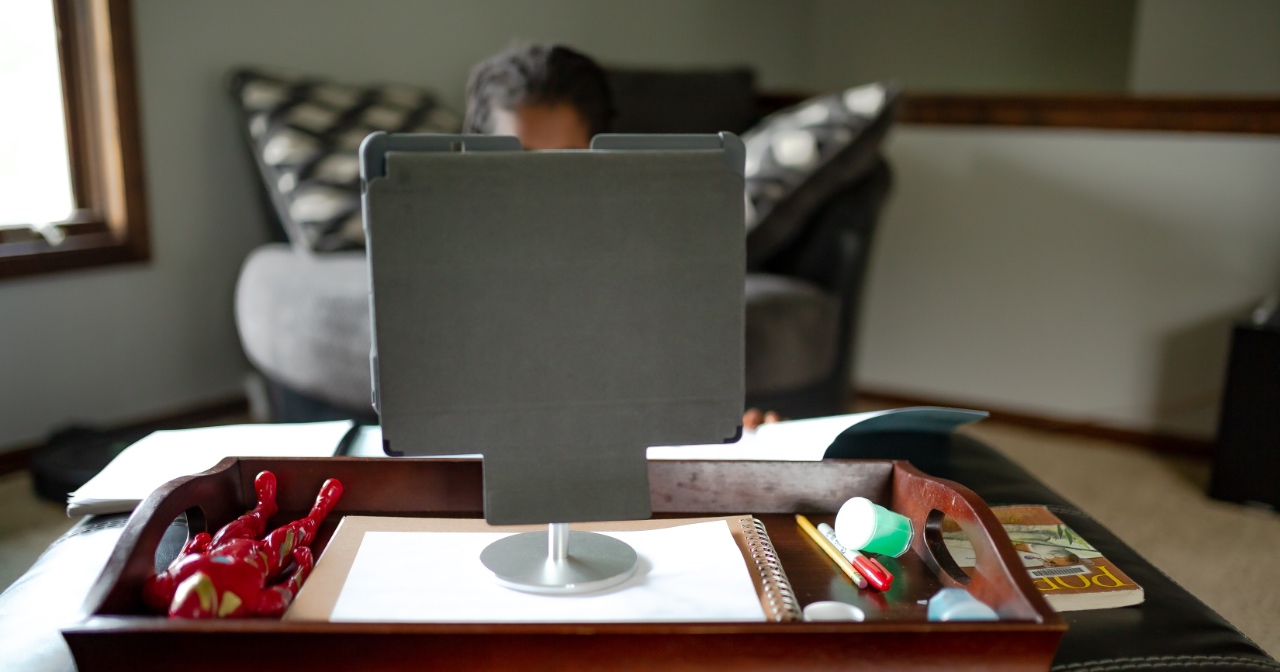Listen on: Apple Podcasts | Spotify
With seemingly little regard for kids’ mental and physical health, politicians, public health “experts,” and teachers upended the existing school system. They replaced it with a half-baked, online, distance learning “solution.”
Surprisingly, there was little pushback on decisions that could have such catastrophic and long-lasting consequences as sending kids home to “learn” on a computer.
For an adult, a year might seem like a small amount of time. For a child, it’s 8% of their K-12 education. A school year averages 180 days. That’s 180 days of:
- learning to get along with other children
- handling disagreements
- celebrating accomplishments
- sharing stories of their individual lives (which develops empathy)
- developing communication skills
- moving more than they do at home (though most schools don’t provide a lot of activity anymore)
Someone with an elementary level of critical thinking would have understood that sending kids home to learn on a computer would be a bad idea. Unfortunately, anyone who brought a reasonable argument against distance learning early on was labeled a conspiracy theorist, a threat to public health, or censored or canceled by media platforms where they shared their message.
The experiment on our youth will likely have tragic effects, as research shows. Two recent studies show what many reasonably-minded people knew from the start: Distance learning is not only less effective for learning, but it also leads to worse mental and physical health for students.
That’s not to say the public school system is perfect as-is. Far from it. The shift in ideologies spreading across school systems this past year poses a significant threat as well.
But this article isn’t about critical race theory, men using girls’ bathrooms, or socialist indoctrination. And those ideologies pose a threat in an online setting as well as an in-person environment.
Here, I merely call attention to the mental and physical health problems an online classroom creates.
As a tax-paying American, you pay for the public school system. When you realize the damage it’s doing, you may decide to get more involved with selecting the school board and making your voice heard throughout the local school system.
If you have insights to share, please do so in the comments section below.

Feel Better Fast. Guaranteed.
Energy+, EDGE, and MentaBiotics make up the Happy Juice supplement stack, with ingredients clinically proven to:
- decrease anxiousness scores by 55%
- decrease irritability scores by 60%
- decrease fatigue by 64%
- decrease anger 54%
- decrease tension by 45%
- decrease confusion by 43%
- decrease overall distress by 49%
- increase good bacteria by 70%
- decrease negative mood by 105%
- increase positive mood by 211%
The Sedentary School System and Adult Health Problems
Research has shown that a sedentary lifestyle causes a myriad of health problems in adults. Still, many adults (unnecessarily) accept that disease is a normal part of aging.
But kids aren’t supposed to develop the health problems of adults. They’re supposed to create healthy, strong, and resilient bodies.
Unfortunately, the way the public school system works today. Kids remain sedentary for most, if not all, of a school day.
According to the CDC, pre-COVID, only 3.7% of K-12 schools required daily physical education or its equivalent. Said another way, 96.3% of K-12 schools did not require daily physical education or its equivalent. Seriously, WTF?
The human body thrives when it moves. It deteriorates when it sits.
Inactivity causes damage to both the body and brain. For a developing child, it may lead to long-term health problems and limited learning.
Researchers in Finland looked at how sedentary time impacts systemic inflammation in kids. Systemic inflammation leads to heart disease, dementia, and numerous other health problems.
The paper’s authors concluded:
PA (Physical activity) was inversely and ST (sedentary time) directly associated with circulating levels of biomarkers of inflammation among children. Furthermore, we observed that PA was inversely associated with these biomarkers for inflammation in children with a higher BF% (body fat percentage).
Associations of physical activity, sedentary time, and diet quality with biomarkers of inflammation in children
The more sedentary kids are, the more systemic inflammation they create. The more inflammation they have, the earlier in life they’ll likely succumb to disease. Kids with higher body fat percentages are at the highest risk of elevated inflammation levels.
Even at a young age, excess body fat can lead to significant health problems.
Aside from the impact on systemic inflammation, more active kids do better academically.
Again, this is straight from the CDC. Physically active students:
- Consistently outperform less active, unfit students academically in both the short and long term,
- Demonstrate better classroom behavior,
- Demonstrate a greater ability to focus, and
- Report lower rates of absenteeism.
Interestingly, as I was writing this article, another related study landed in my inbox, showing the impact cardiovascular health has on school grades. One of the authors explained:
physical fitness is related to better executive functions, and it is indeed executive functions that influences school performance, more specifically cognitive flexibility.
Julien Chanal, The Indirect Role of Executive Functions on the Relationship between Cardiorespiratory Fitness and School Grades
So if kids consistently do better with more activity, why have schools taken that away?
From Bad to Worse With Distance Learning
Things were bad enough before the COVID Circus.
In our “stay home, stay safe” world, most kids spend hours each day in front of a computer screen for their “classrooms.” It’s hard enough for adults to work in a world of Zoom meetings. It’s far more of a challenge for kids.
Though a small percentage of schools have stayed open (and a small percentage of those have recess or physical education), most virtual classroom students spend their days sitting in front of a computer.
Many also sit within arms-reach of junk food in the kitchen. It’s almost as though they’re being set up to live in a world like that portrayed in WALL-E.
The CDC finally admitted that this is a problem.
According to the study:
These findings suggest that virtual instruction might present more risks than does in-person instruction related to child and parental mental and emotional health and some health-supporting behaviors, such as engaging in physical activity, with combined instruction falling between.
At a certain point, if a parent made choices that risked that child’s mental and physical wellbeing, child protective services would intercede. Yet, this issue seems to be far down the list of Mainstream concerns. Instead, the focus remains on far-left ideologies instead.
Read also: Why our risk of COVID-19 is our responsibility, not someone else’s.
We All Must Do Something
Unfortunately, parents can no longer trust schools to have their kids’ best interests in mind. Nor should they ever expect schools to teach them lessons they ought to learn from their parents, including good nutrition and a physically active lifestyle.
Most adults don’t meet the minimal CDC recommendations for physical activity. If an adult doesn’t make a concerted effort to get in enough exercise each day, he or she probably won’t notice when their kids don’t either.
For that matter, parents who’ve come to accept their job is now a series of Zoom meetings might not notice how dysfunctional it is for their kids to be learning in a series of Zoom classes.
If they’ve gotten used to talking with others while wearing masks, they won’t notice the damage that mask-wearing may have on their children wearing masks to play on a sports team or the playground.
None of this is normal, and normal is a place we need to return before we forget what that is.
Read also: Unmasked. Unmuzzled. Unvaccinated. Unafraid.
Unmasked. Unmuzzled. Unvaccinated. Unafraid.
Make a statement without saying a word.

Photo by Solen Feyissa on Unsplash



